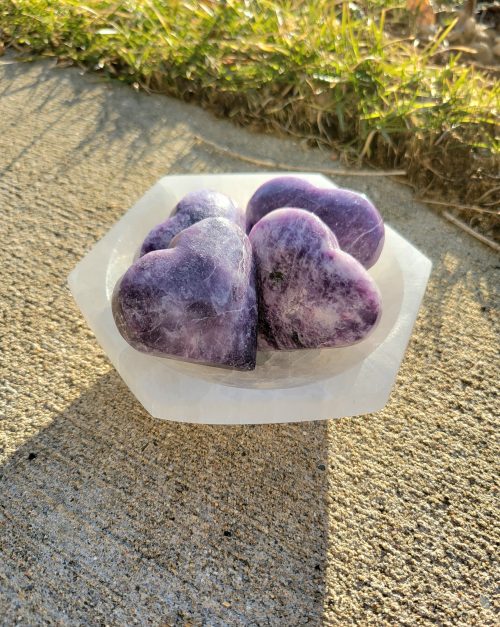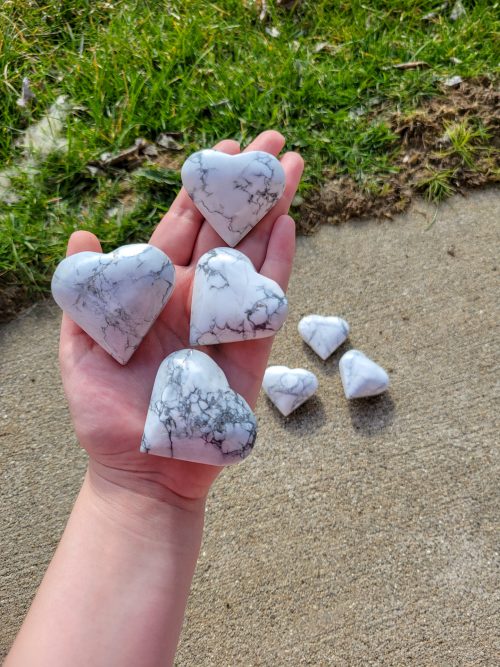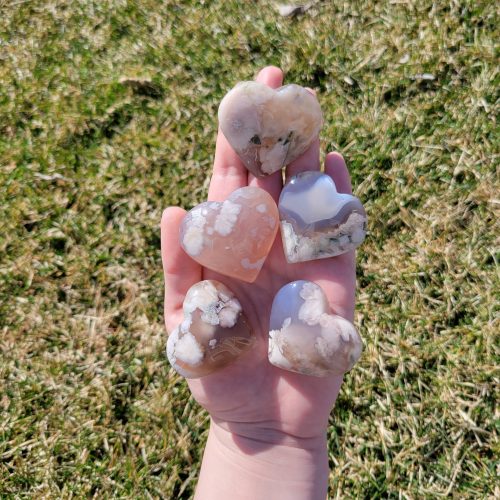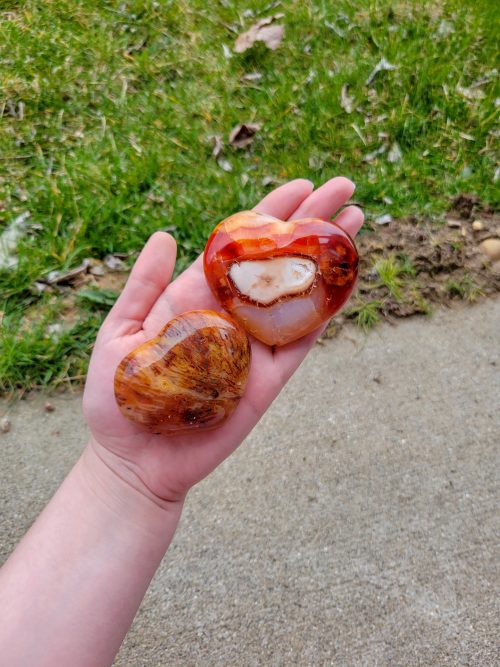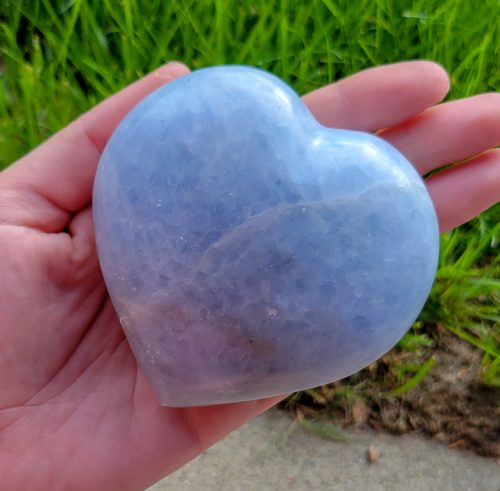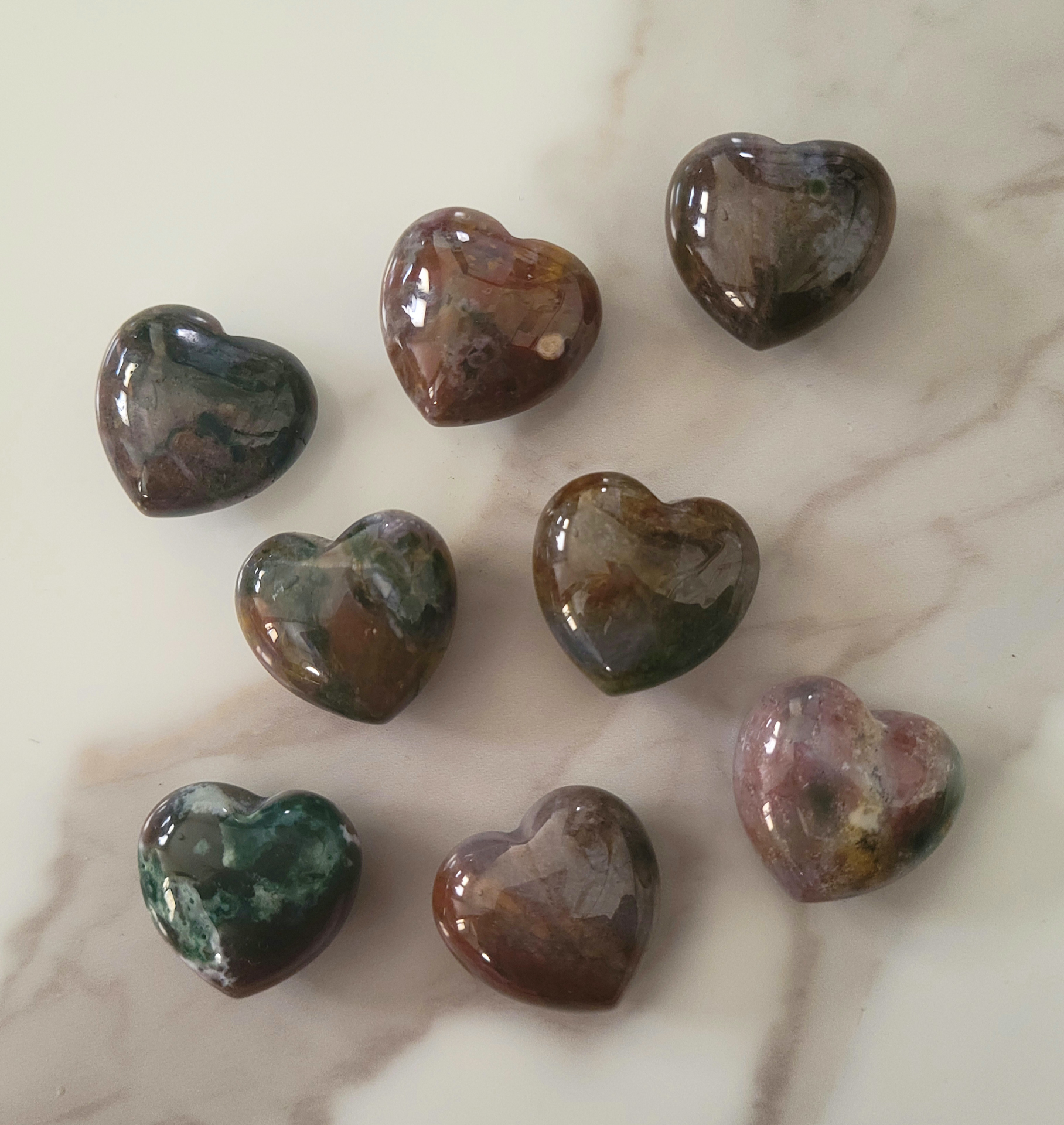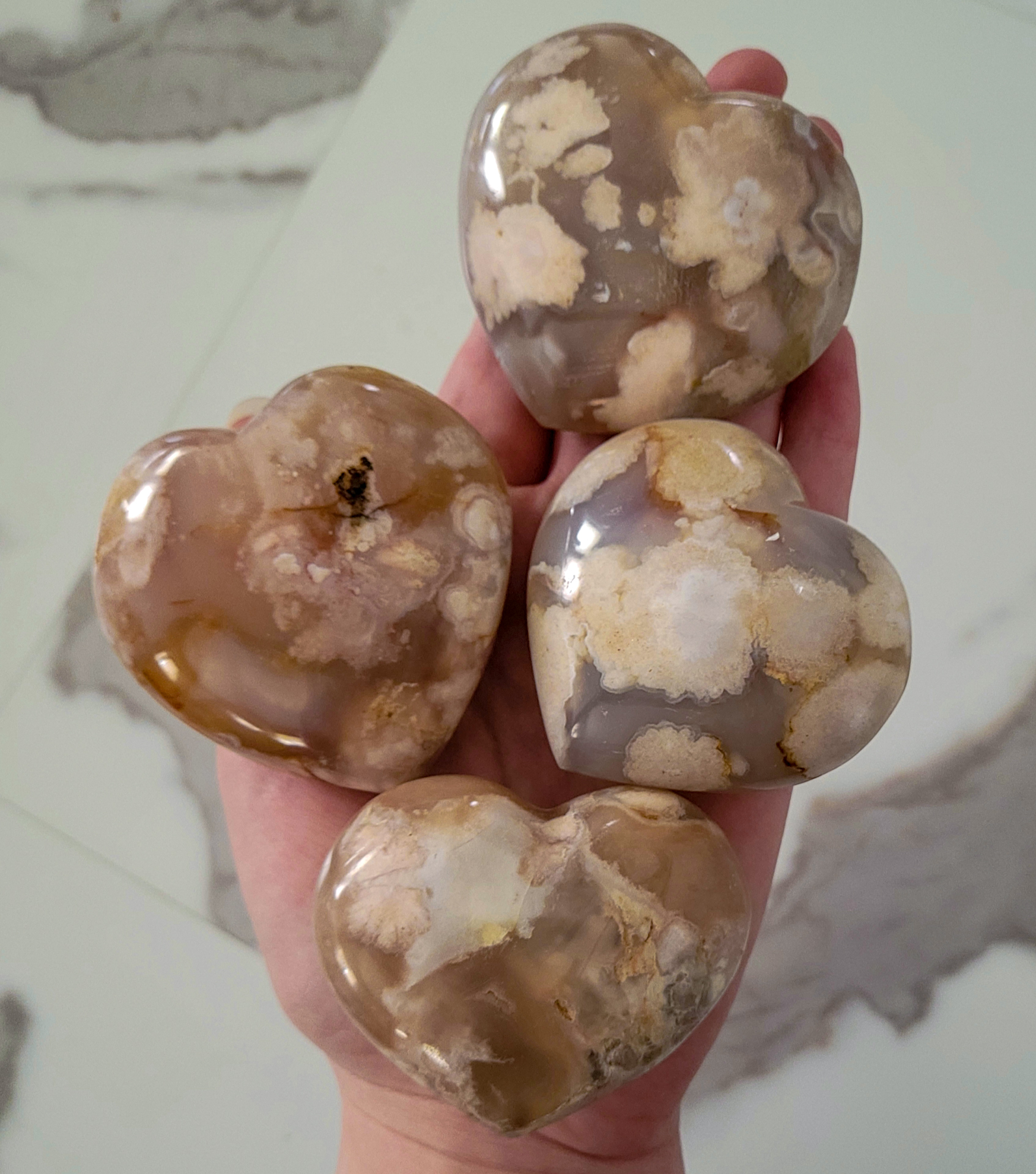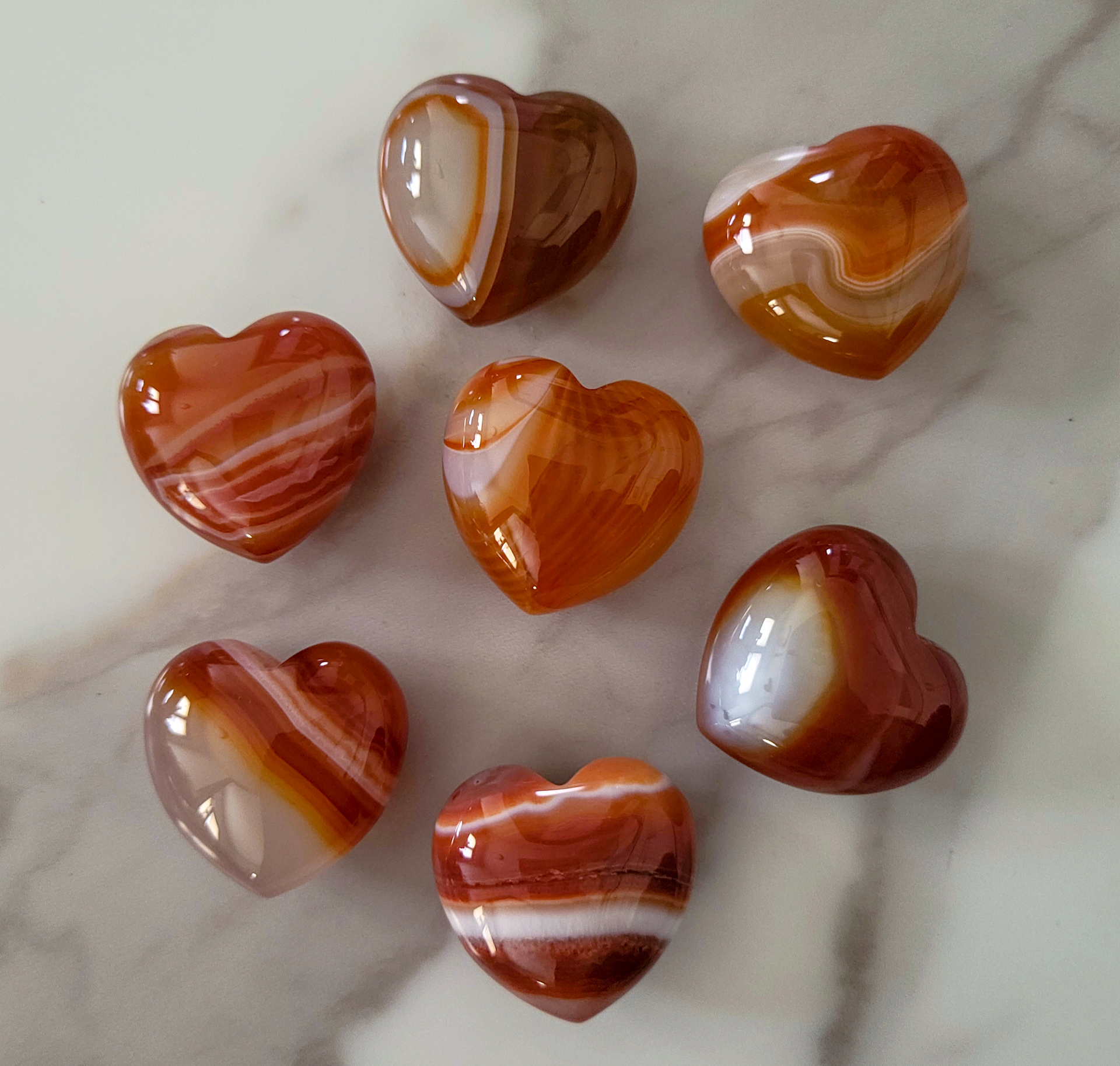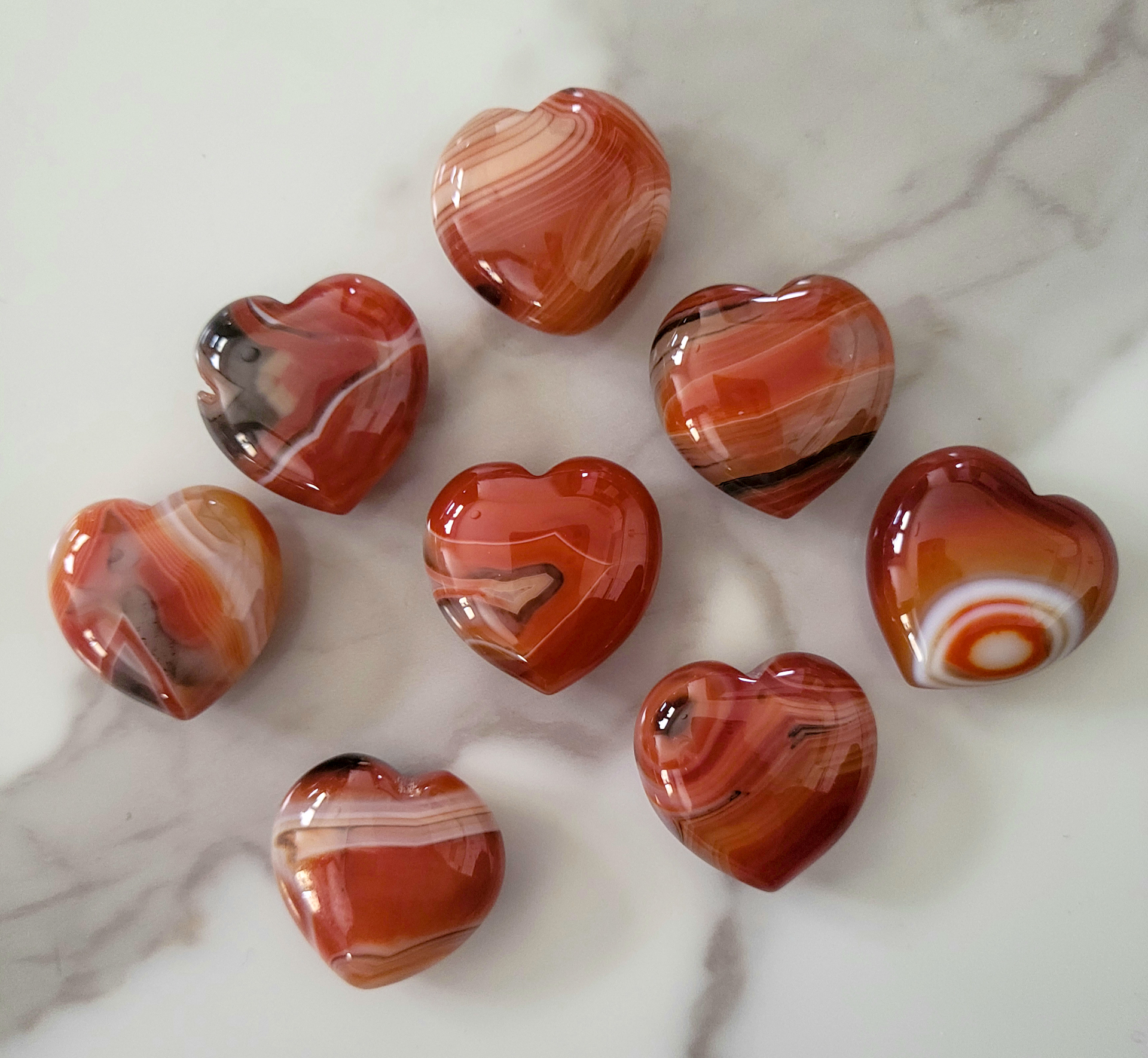-
5cm x 5cm x 3cm Lepidolite is a rare, lithium-rich, mica mineral. This beautiful mineral's color ranges from pinks and reds to purple. The color comes from the amounts of magnesium found in the mineral. Lepidolite is found in Brazil, Madagascar, Australia, and many other countries where lithium is found. ***Due to natural variations in stones, the appearance will vary***
-
5cm - 6cm Wide Kiwi Jasper is a mix of amazonite, tourmaline, jasper, and quartz. It gets its name from the green tinge (amazonite) it has in addition to the green specks on it (tourmaline). This mineral is mainly found in New Zealand. ***Due to natural variations in stones, appearance will vary***
-
7cm Wide Kiwi Jasper is a mix of amazonite, tourmaline, jasper, and quartz. It gets its name from the green tinge (amazonite) it has in addition to the green specks on it (tourmaline). This mineral is mainly found in New Zealand. ***Due to natural variations in stones, appearance will vary***
-
4.5cm Wide Howlite was originally discovered in Canada by a geologist named Henry How which is where its name comes from. Howlite is formed in evaporate deposits with other borate and evaporate minerals. The outside of the mineral is not pleasant to the eye and is said to look like a head of cauliflower. However, when that is taken off, this beautiful mineral is found inside! This mineral is mainly found in Canada and the USA. ***Due to natural variations in stones, the appearance will vary***
-
5.5cm Wide Flower agate gets its name from the flower-like formations within the crystal's body. These crystals are volcanic rocks that are mainly composed of chalcedony and quartz. These crystals can vary in color; from pink to a dark grey/purple. Recently discovered in Madagascar, these crystals are believed to go back to 2000 BC. ***Due to natural variations in stones, the appearance will vary***
-
4cm - 5cm Carnelian is a part of the Chalcedony family. It is formed when two silica minerals with different crystal structures grow together such as quartz and moganite. The firey orange and red colors come from iron oxides in the mineral. Carnelian can be found in Brazil, India, and Uruguay. ***Due to natural variations in stones, the appearance will vary***
-
7cm Wide Carnelian is a part of the Chalcedony family. It is formed when two silica minerals with different crystal structures grow together such as quartz and moganite. The firey orange and red colors come from iron oxides in the mineral. Carnelian can be found in Brazil, India, and Uruguay. ***Due to natural variations in stones, the appearance will vary***
-
9cm Wide Calcite is a rock-forming mineral that is found throughout the world in sedimentary, metamorphic, and igneous rocks. The blue color comes from the calcium carbonate inclusions within this mineral. Blue calcite can be found in many places around the world but mostly in Mexico, The United States, Britain, and Iceland. ***Due to natural variations in stones, appearance will vary***
-
3 x 1 x 3cm Ocean jasper is a rare and colorful material exclusively from Madagascar. It is described as a variety of Orbicular Jasper due to its orb-like inclusions. Ocean jasper is a name for what is known to be a spherulitic chalcedony which is a cryptocrystalline variety of quartz. Cryptocrystalline is a term that means its crystals are too small to be seen with the naked eye. ***Due to natural variations in stones, appearance will vary***
-
8 x 2 x 8cm Flower agate gets its name from the flower-like formations within the crystal's body. These crystals are volcanic rocks that are mainly composed of chalcedony and quartz. These crystals can vary in color; from pink to a dark grey/purple. Recently discovered in Madagascar, these crystals are believed to go back to 2000 BC. ***Due to natural variations in stones, the appearance will vary***
-
3 x 1 x 3cm Carnelian is a part of the Chalcedony family. It is formed when two silica minerals with different crystal structures grow together such as quartz and moganite. The firey orange and red colors come from iron oxides in the mineral. Carnelian can be found in Brazil, India, and Uruguay. ***Due to natural variations in stones, the appearance will vary***
-
3 x 1 x 3cm Carnelian is a part of the Chalcedony family. It is formed when two silica minerals with different crystal structures grow together such as quartz and moganite. The firey orange and red colors come from iron oxides in the mineral. Carnelian can be found in Brazil, India, and Uruguay. ***Due to natural variations in stones, the appearance will vary***

